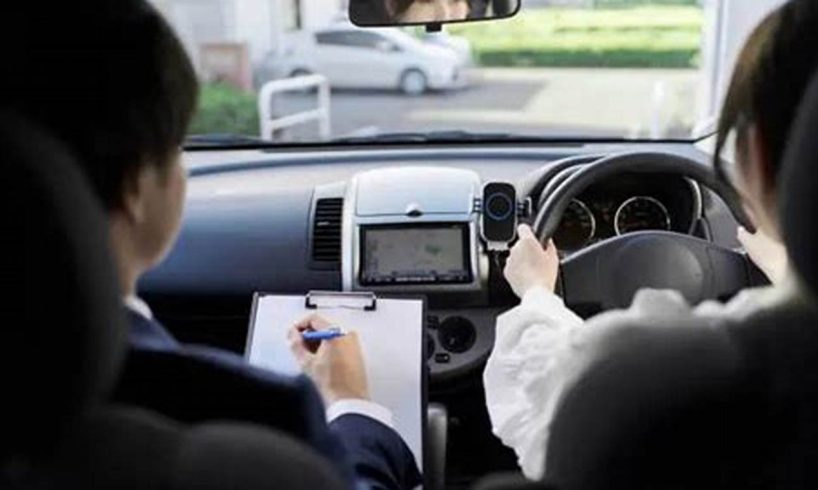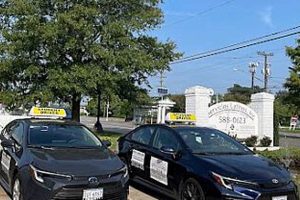
Driving school is an educational program that teaches students the skills and knowledge needed to operate a motor vehicle safely and legally. The length of driving school can vary depending on the specific program and the state or country in which it is offered.
In the United States, most driving schools offer courses that are between 30 and 60 hours in length. These courses typically include a combination of classroom instruction and behind-the-wheel training. Classroom instruction covers topics such as traffic laws, defensive driving techniques, and vehicle maintenance. Behind-the-wheel training provides students with the opportunity to practice driving in a variety of conditions under the supervision of a qualified instructor.
The benefits of attending driving school include:
- Learning the skills and knowledge needed to operate a motor vehicle safely and legally
- Improving driving skills and confidence
- Reducing the risk of being involved in a car accident
- Qualifying for insurance discounts
If you are considering attending driving school, be sure to research the different programs that are available in your area. Choose a program that fits your needs and budget, and that is offered by a reputable driving school.
1. Course Type
The type of driving school course directly influences its duration. Course formats range from classroom-only to behind-the-wheel only to a combination of both. Each format caters to different needs and experience levels, impacting the overall length of the program.
Classroom-only courses, typically shorter in duration, focus on theoretical knowledge and traffic laws. They provide a foundation for driving but lack practical behind-the-wheel training. On the other hand, behind-the-wheel-only courses concentrate on practical driving skills without classroom instruction. These courses are ideal for experienced drivers seeking to refine their abilities or obtain a specific license endorsement.
Combination courses, as the name suggests, combine classroom instruction with behind-the-wheel training. This comprehensive approach is commonly chosen by first-time drivers or those with limited driving experience. The combination format allows students to gain both theoretical and practical knowledge, ensuring a well-rounded education.
Ultimately, the choice of course type depends on individual circumstances and learning preferences. Understanding the connection between course type and program duration empowers individuals to make informed decisions that align with their specific needs and goals.
2. Location
The location of a driving school significantly impacts its program length due to varying regulations and requirements set by different states or countries. These regulations often dictate the minimum number of hours of classroom instruction and behind-the-wheel training required to obtain a driver’s license. For instance, in the United States, each state has its own Department of Motor Vehicles (DMV) that establishes specific guidelines for driver education programs.
The duration of driving school courses can also vary based on the type of license being pursued. For example, commercial driver’s license (CDL) programs typically require more training hours compared to standard driver’s license programs. Additionally, some states may have special requirements for drivers under a certain age or with specific driving histories, leading to extended program lengths.
Understanding the connection between location and driving school duration is crucial for individuals planning to enroll in such programs. By researching the regulations and requirements in their respective areas, they can gain a clear understanding of the time commitment involved and make informed decisions about their driving education.
3. Age of Student
The age of a student is a significant factor influencing the duration of driving school. Different age groups often have varying course requirements, impacting the overall length of the program. Understanding this connection is crucial for individuals seeking to obtain a driver’s license.
In many jurisdictions, the minimum age to obtain a learner’s permit or driver’s license varies. This variation leads to differences in course requirements and program duration. For instance, in the United States, most states allow individuals to obtain a learner’s permit at the age of 15 or 16. However, the driving school course requirements and the duration of the program may differ depending on the specific age of the student.
For younger students, driving school courses often include additional emphasis on foundational driving principles, traffic laws, and safety precautions. The extended duration of these courses ensures that young drivers have a comprehensive understanding of the responsibilities and skills required for safe driving.
As students progress in age and experience, driving school courses may become shorter in duration. This is because older students typically have some prior driving experience or knowledge, allowing them to focus on more advanced driving techniques and maneuvers.
Recognizing the connection between age and driving school duration enables individuals to make informed decisions about their driving education. By understanding the varying course requirements based on age, students can choose programs that align with their needs and goals, ultimately enhancing their driving skills and safety on the road.
4. Prior Experience
Prior driving experience plays a pivotal role in determining the duration of driving school. Individuals who possess prior driving experience may qualify for shorter programs, as they have already gained a foundation in the fundamental principles of driving. This understanding enables them to progress more quickly through the curriculum, focusing on more advanced driving techniques and maneuvers.
Driving schools often assess prior driving experience through evaluations or self-reported information. Based on this assessment, students may be placed in appropriate courses that align with their skill level. For instance, a student with extensive driving experience may be eligible for a shorter program that emphasizes defensive driving techniques and road safety strategies, rather than basic car control and maneuvers.
The practical significance of understanding the connection between prior experience and driving school duration lies in optimizing the learning process. By tailoring the program to the individual’s skill level, driving schools can ensure that students receive the most appropriate education for their needs. This targeted approach enhances learning outcomes, promotes confidence behind the wheel, and ultimately contributes to safer driving practices.
In summary, prior driving experience is a crucial factor influencing the duration of driving school. Recognizing this connection allows individuals to make informed decisions about their driving education, selecting programs that align with their experience level and learning goals. This understanding fosters a more efficient and effective learning experience, empowering drivers with the skills and knowledge necessary for safe and responsible driving.
5. School Availability
The availability and scheduling of driving school courses significantly influence their duration. Understanding this connection empowers individuals to make informed decisions about their driving education and optimize their learning experience.
- Scheduling Flexibility: Driving schools with flexible scheduling options allow students to accommodate their busy schedules and personal commitments. This flexibility enables students to complete the program at a pace that aligns with their availability, potentially shortening the overall duration.
- Course Availability: The availability of courses, particularly during peak seasons or in high-demand areas, can impact duration. When course availability is limited, students may need to wait for open slots or join waitlists, extending the time it takes to complete the program.
- Location and Accessibility: The location and accessibility of driving schools can affect duration. Schools located in convenient areas with easy access to major roads and highways may offer more scheduling options and shorter travel times for students, ultimately reducing the overall duration.
- Class Size and Availability: The size and availability of classes can influence duration. Smaller class sizes often allow for more personalized attention and hands-on practice, potentially accelerating the learning process and reducing the overall duration.
Recognizing the connection between school availability and driving school duration enables individuals to plan effectively. By considering factors such as scheduling flexibility, course availability, location, and class size, students can choose programs that align with their needs and optimize their learning experience.
6. Cost
The cost of driving school, including course fees and additional expenses, plays a significant role in determining its duration. Understanding this connection allows individuals to make informed decisions about their driving education and financial planning.
- Course Fees: Driving school fees vary depending on the type of course, the duration of the program, and the reputation of the school. These fees typically cover the cost of classroom instruction, behind-the-wheel training, and administrative expenses. Higher course fees may indicate a more comprehensive or specialized program, potentially leading to a longer duration.
- Additional Expenses: Beyond course fees, students may incur additional expenses such as transportation to and from driving lessons, parking fees, and the cost of a learner’s permit or driver’s license. These expenses can add to the overall cost of driving school and potentially extend its duration.
- Financial Assistance: Some driving schools offer financial assistance programs or payment plans to help students manage the cost of their education. By exploring these options, individuals can potentially reduce the financial burden and shorten the duration of their driving school experience.
- Value for Money: When considering the cost of driving school, it is essential to evaluate the value for money. Reputable driving schools with experienced instructors and a proven track record of success may charge higher fees but provide a higher quality of education, leading to better driving skills and potentially reducing the duration of the program in the long run.
Recognizing the connection between cost and driving school duration empowers individuals to make informed decisions about their driving education. By carefully considering course fees, additional expenses, financial assistance options, and value for money, students can optimize their learning experience and achieve their driving goals within a timeframe that aligns with their financial circumstances.
7. Personal Availability
The duration of driving school is directly influenced by the personal availability of students. This facet encompasses various factors that impact the pace at which students can complete the program, including their schedules, time constraints, and commitments.
- Scheduling Flexibility: Driving schools offer varying levels of scheduling flexibility to accommodate students with busy schedules. Flexible scheduling allows students to plan lessons around their other commitments, such as work, school, or family responsibilities. This flexibility can significantly reduce the overall duration of driving school, as students can progress at their own pace without interruptions.
- Time Constraints: Students with limited time availability may need to extend the duration of their driving school experience to accommodate their schedules. This is particularly common for students who are balancing driving lessons with other demanding activities, such as full-time employment or academic studies. Understanding time constraints helps students plan a realistic timeline for completing the program.
- Personal Commitments: Personal commitments, such as family obligations, social activities, or travel, can also impact the pace of driving school completion. Students may need to adjust their driving lesson schedules or temporarily pause their education to attend to these commitments. By considering personal commitments, students can avoid potential delays and ensure a smooth learning experience.
- Learning Pace: The pace at which students learn and retain information can influence the duration of driving school. Students who require more time to grasp concepts or develop proficiency behind the wheel may need additional lessons or practice sessions. Driving schools can tailor the program to meet individual learning paces, ensuring that students have ample opportunities to develop their skills and confidence.
In summary, understanding the connection between personal availability and the duration of driving school empowers students to make informed decisions about their education. By considering their schedules, time constraints, and personal commitments, students can plan a realistic timeline for completing the program and optimize their learning experience.
FAQs about Driving School Duration
This section addresses frequently asked questions (FAQs) about the duration of driving school. Understanding these FAQs can help individuals make informed decisions about their driving education and optimize their learning experience.
Question 1: How long does driving school typically take to complete?
The duration of driving school varies depending on factors such as the type of course, location, age of the student, prior experience, school availability, and personal availability. In general, driving school courses can range from a few weeks to several months to complete.
Question 2: What factors influence the duration of driving school?
Several factors influence the duration of driving school, including the type of course (classroom-only, behind-the-wheel-only, or a combination), location (state or country regulations), age of the student, prior driving experience, availability of the driving school, and the student’s personal availability.
Question 3: How can I reduce the duration of driving school?
To reduce the duration of driving school, consider enrolling in a comprehensive course that combines classroom instruction with behind-the-wheel training. Additionally, if you have prior driving experience, you may be eligible for a shorter program. Furthermore, choosing a driving school with flexible scheduling and convenient locations can minimize the time spent on logistics.
Question 4: How can I find a driving school that fits my schedule?
Research driving schools in your area and compare their schedules and availability. Look for schools that offer flexible scheduling options and convenient locations to accommodate your busy schedule. You can also inquire about the average duration of their programs to ensure it aligns with your time constraints.
Question 5: What is the average cost of driving school?
The cost of driving school varies depending on the type of course, duration of the program, and reputation of the school. Course fees typically cover the cost of classroom instruction, behind-the-wheel training, and administrative expenses. It’s important to consider the value for money when selecting a driving school, as reputable schools with experienced instructors may charge higher fees but provide a higher quality of education.
Question 6: What are some tips for choosing a driving school?
When choosing a driving school, consider factors such as the type of courses offered, duration of the programs, cost, location, availability, and reputation. Read reviews from previous students and inquire about the school’s safety record and insurance coverage. Additionally, ensure that the school is licensed and certified by the relevant authorities.
Understanding these FAQs about driving school duration empowers individuals to make informed decisions about their driving education. By carefully considering the factors that influence the duration, individuals can choose programs that align with their needs and goals, optimize their learning experience, and obtain their driver’s license efficiently.
Moving forward, the next section will delve into the importance of choosing a reputable driving school to ensure a high-quality education and a safe driving experience.
Tips for Choosing a Reputable Driving School
Selecting a reputable driving school is crucial for obtaining a high-quality education and ensuring a safe driving experience. Consider the following tips to make an informed decision:
Tip 1: Verify Licensing and CertificationEnsure that the driving school is licensed and certified by the relevant authorities in your state or country. This verifies that the school meets established standards and safety regulations.Tip 2: Research the School’s ReputationRead reviews and testimonials from previous students to gain insights into the quality of the school’s instruction, customer service, and safety record. Positive feedback from past students is a good indicator of a reputable driving school.Tip 3: Inquire About the Curriculum and InstructorsChoose a driving school with a comprehensive curriculum that covers both theoretical knowledge and practical driving skills. Additionally, inquire about the qualifications and experience of the instructors to ensure they are knowledgeable and certified.Tip 4: Consider the School’s Safety RecordSafety should be a top priority when choosing a driving school. Inquire about the school’s safety record and insurance coverage to ensure that they prioritize the well-being of their students.Tip 5: Check for Flexible Scheduling and Convenient LocationsChoose a driving school that offers flexible scheduling options and convenient locations to accommodate your busy schedule and minimize travel time. This will help you complete the program efficiently.Tip 6: Compare Course Fees and PackagesCompare the course fees and packages offered by different driving schools to find the best value for your money. Consider the duration of the program, the number of lessons included, and any additional services or materials provided.Tip 7: Read the Contract CarefullyBefore enrolling in a driving school, thoroughly read and understand the contract. Pay attention to the terms and conditions, including the refund policy, liability coverage, and any additional fees.Tip 8: Trust Your InstinctsAfter considering all the factors, trust your instincts when choosing a driving school. Visit the school, meet the instructors, and get a feel for the overall atmosphere to ensure it aligns with your expectations and learning style.
By following these tips, you can select a reputable driving school that will provide you with a high-quality education and prepare you for a lifetime of safe and responsible driving.
In conclusion, choosing a reputable driving school is essential for a successful and safe driving experience. By considering the factors outlined in these tips, you can make an informed decision and embark on your driving journey with confidence.
Conclusion
The duration of driving school is influenced by a multitude of factors, including course type, location, age, experience, availability, and personal circumstances. By comprehending these factors, individuals can make informed decisions about their driving education and optimize their learning experience.
Choosing a reputable driving school is paramount for ensuring a high-quality education and a safe driving experience. Consider factors such as licensing, curriculum, instructor qualifications, safety record, and flexibility when selecting a school. Trust your instincts and choose a school that aligns with your learning style and expectations.
Driving school provides essential knowledge and skills for safe and responsible driving. By investing in a reputable driving school and tailoring the program to your individual needs, you can embark on your driving journey with confidence and navigate the roads with competence and assurance.






